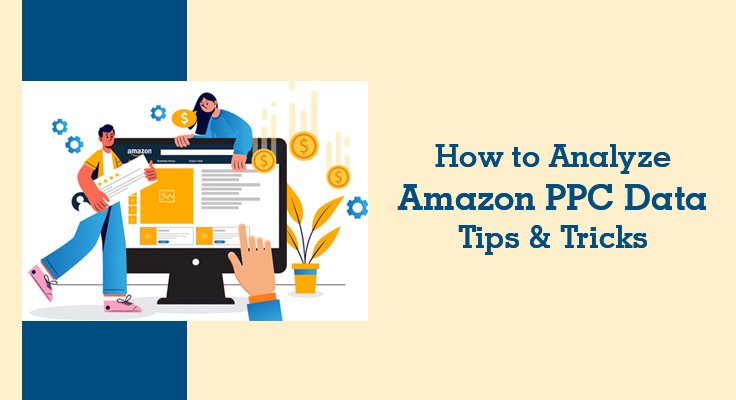If you’re selling products on Amazon, you’ve probably heard about Amazon PPC (Pay-Per-Click) advertising. It’s a powerful tool that can boost your sales and visibility, but only if you know how to use it right. The key to success? Analyzing your PPC data. Let’s dive into some tips and tricks to help you make the most of your Amazon PPC campaigns.
Why Analyze Amazon PPC Data?
Before we jump into the how-to, let’s talk about why analyzing your PPC data is so important. Think of it like this: you wouldn’t drive a car blindfolded, right? Well, running Amazon ppc campaigns without looking at the data is kind of the same thing. You need to see where you’re going to make smart decisions.
By looking at your PPC data, you can:
1. Find out which ads are working and which aren’t
2. Spot trends in customer behavior
3. Figure out where you’re spending too much money
4. Discover new keywords that could boost your sales
5. Make smart choices about your ad budget
Now that we know why it’s important, let’s get into the nitty-gritty of how to analyze your Amazon PPC data.
Step 1: Get Familiar with Key Metrics
First things first, you need to know what you’re looking at. Here are some important metrics to keep an eye on:
– Impressions: How many times your ad was shown
– Clicks: How many times someone clicked on your ad
– Click-Through Rate (CTR): The percentage of people who clicked on your ad after seeing it
– Cost-Per-Click (CPC): How much you pay for each click
– Advertising Cost of Sales (ACoS): How much you spend on ads compared to the sales you make
– Conversion Rate: The percentage of clicks that turn into sales
These numbers are like the vital signs of your PPC campaign. They tell you how healthy (or unhealthy) your ads are.
Step 2: Use Amazon’s Built-in Tools
Amazon gives you some great tools to look at your PPC data. The main one is the Advertising Reports section in Seller Central. Here, you can see how your campaigns are doing over time. You can look at different date ranges, compare campaigns, and even download the data to look at it more closely.
Don’t be scared of these reports! They might look complicated at first, but they’re full of useful information. Take some time to explore and get comfortable with them.
Step 3: Look for Patterns
Now comes the fun part – detective work! As you look at your data, try to spot patterns. Are there certain days of the week when your ads do better? Do some keywords always seem to get more clicks? Are there products that sell well with PPC but not so well without it?
These patterns can give you clues about how to improve your campaigns. Maybe you need to increase your bids on certain days, or focus more on specific keywords.
Step 4: Focus on Profitable Keywords
Keywords are the backbone of PPC advertising. But not all keywords are created equal. Some will bring you lots of sales, while others might just eat up your budget without much return.
Look at your keyword data carefully. Which ones have a good balance of impressions, clicks, and sales? These are your golden keywords – the ones you want to focus on.
On the flip side, look for keywords that are costing you money but not bringing in sales. It might be time to pause or remove these from your campaigns.
Step 5: Keep an Eye on Your ACoS
ACoS (Advertising Cost of Sales) is a super important metric. It tells you how much you’re spending on ads compared to the sales you’re making. A lower ACoS is generally better, but what’s “good” can vary depending on your products and goals.
If your ACoS is too high, it might mean you’re spending too much on ads compared to what you’re earning. In this case, you might need to adjust your bids, improve your product listings, or rethink your keyword strategy.
Step 6: Don’t Forget About Long-Tail Keywords
Long-tail keywords are longer, more specific phrases. They might not get as many searches as shorter keywords, but they can be gold for PPC. Why? Because they often have less competition and can lead to more targeted traffic.
As you analyze your data, look for long-tail keywords that are performing well. These could be hidden gems in your campaigns.
Step 7: Use Negative Keywords Wisely
Negative keywords are words or phrases that you don’t want your ads to show up for. They’re a great way to save money and improve your targeting.
Look for keywords in your data that are getting clicks but not sales. These might be good candidates for your negative keyword list. Just be careful not to block potentially useful keywords!
Step 8: Compare Manual and Automatic Campaigns
Amazon lets you run both manual and automatic PPC campaigns. Manual campaigns give you more control, while automatic campaigns can help you discover new keywords.
Compare the performance of your manual and automatic campaigns. Are there keywords from your automatic campaigns that are doing well? Consider adding these to your manual campaigns for more control over bids.
Step 9: Don’t Ignore Your Product Listings
While this isn’t directly related to PPC data, it’s crucial to remember that your product listings play a big role in your PPC success. If people click on your ad but don’t buy, it could be because your listing needs work. For expert help in optimizing your listings and PPC campaigns, checkout Amazowl, one of the best PPC agencies.
Look at your conversion rates for different products. If some are much lower than others, it might be time to improve those listings.
Step 10: Keep Testing and Learning
PPC analysis isn’t a one-time thing. It’s an ongoing process of testing, learning, and improving. Don’t be afraid to try new things – maybe a different bidding strategy or a new set of keywords.
Keep track of the changes you make and how they affect your results. Over time, you’ll get better at spotting what works and what doesn’t.
Also Read: Top Digital Marketing Training Institutes in India in 2024





















